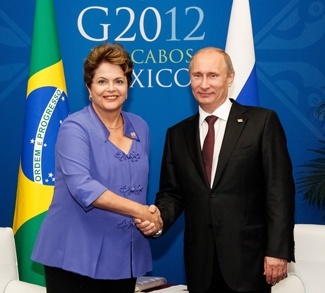The role of the US dollar will still be quite significant in the future, even though several countries and trading blocs are starting to abandon it as a means of payment for exports and imports (cross border payments). As this process continues to play out, the dominance of the dollar as a means of payment will certainly decrease; however, the role of the dollar as a “medium of exchange,” “unit of account,” and “store of value” will continue to dominate for quite a long time.
This is due to the fact that the US dollar will still be used as a means of payment for trade in many regions, mainly because of the practicality of the abundance of dollar liquidity on the one hand and the dollar’s role as an “anchor” of global trade on the other.
In other words, the US dollar will still be used in many locations as the unit of account that has been recognized for more than 70 years, and as a hedging instrument considered to be stable ever since the dollar was separated from gold in 1971 by Richard Nixon, ending the Bretton Wood era. The difficulties of de-dollarization are compounded by the technical difficulties inherent in calculating value, difficulties that have long been avoided by weighing such calculations against the dollar.
But perhaps most importantly, any de-dollarization process must account for the fact that countries and business actors will still issue debt securities, bonds, and other instruments in dollar form to meet their capital needs, both regular and emergency, owing to the volume and liquidity provided by the “flexible capital account” standard of the United States.
Likewise, US government debt securities will remain an attractive investment and hedging instrument for business and state actors, as it’s still considered one of the safest and most liquid instruments on offer.
In search of a replacement for the greenback
Another hurdle for de-dollarization is the lack of any global currency that can substitute for the dollar. The euro and yuan are often held up as potential candidates. However, the euro is not yet as widespread as the dollar on the global stage due to: A) its limited circulation, and B) the inherent monetary instability that results from disparate economic and political conditions across the euro zone.
The yuan on the other hand is still constrained by limited liquidity due to strict capital control policies implemented by the Central Bank of China (PBOC). So far, China has refused to loosen its grip on monetary policy to compete with Washington, restricting the amount of yuan able to circulate globally.
Yet this doesn’t mean Beijing is not striving to advance de-dollarization by strengthening the yuan’s global reach. In this, China has adopted a dual approach by increasing the global role of the yuan via onshore and offshore markets. The primary objective is to reduce the impact of global currency market fluctuations on yuan pricing, which would otherwise risk eroding the competitiveness of China’s exports (if the yuan appreciates sharply based). The caution stems the aftermath of the 1997 Asian financial crisis, which saw the value of currencies in Thailand, Indonesia, Malaysia and South Korea plummet after being flexibly linked to the dollar.
China’s capital markets feature similar controls, whereby Beijing has imposed several layers of barriers to reduce the direct influence of global market forces on domestic capital markets. China introduced three types of shares that can be traded on different markets: A shares for local companies registered in Shanghai and Shenzhen, B shares for foreign companies that issue shares in the Chinese domestic market, and H shares for Chinese companies listed on the Hong Kong market. And there are limits on which buyers are able to purchase particular shares.
In short, China would need to institute fundamental reforms to its monetary and financial system for the yuan to become a credible global substitute for the dollar. Barring these reforms, de-dollarization efforts will hit a roadblock in the form of yuan availability. Moreover, if China does not increase the role of the yuan on the global stage, the yuan will be considered a dwarf currency that does not represent a realistic portion of China’s economy on the global stage. And it cannot be denied that there is a political desire in Beijing to supplant the dominant role of the US dollar on the global stage and in doing so manifest China’s status as an economic superpower.
Thus, looking forward, any credible path to global de-dollarization demands that China carefully prepare its financial economic infrastructure for the yuan’s ascent. Only then can the dominance of the US dollar – an instrument that remains useful for many states in the Global South – truly be eroded.
Ronny P Sasmita is a Senior Fellow for Indonesia Strategic and Economic Action Institution.
The views expressed in this article belong to the author(s) alone and do not necessarily reflect those of Geopoliticalmonitor.com.




